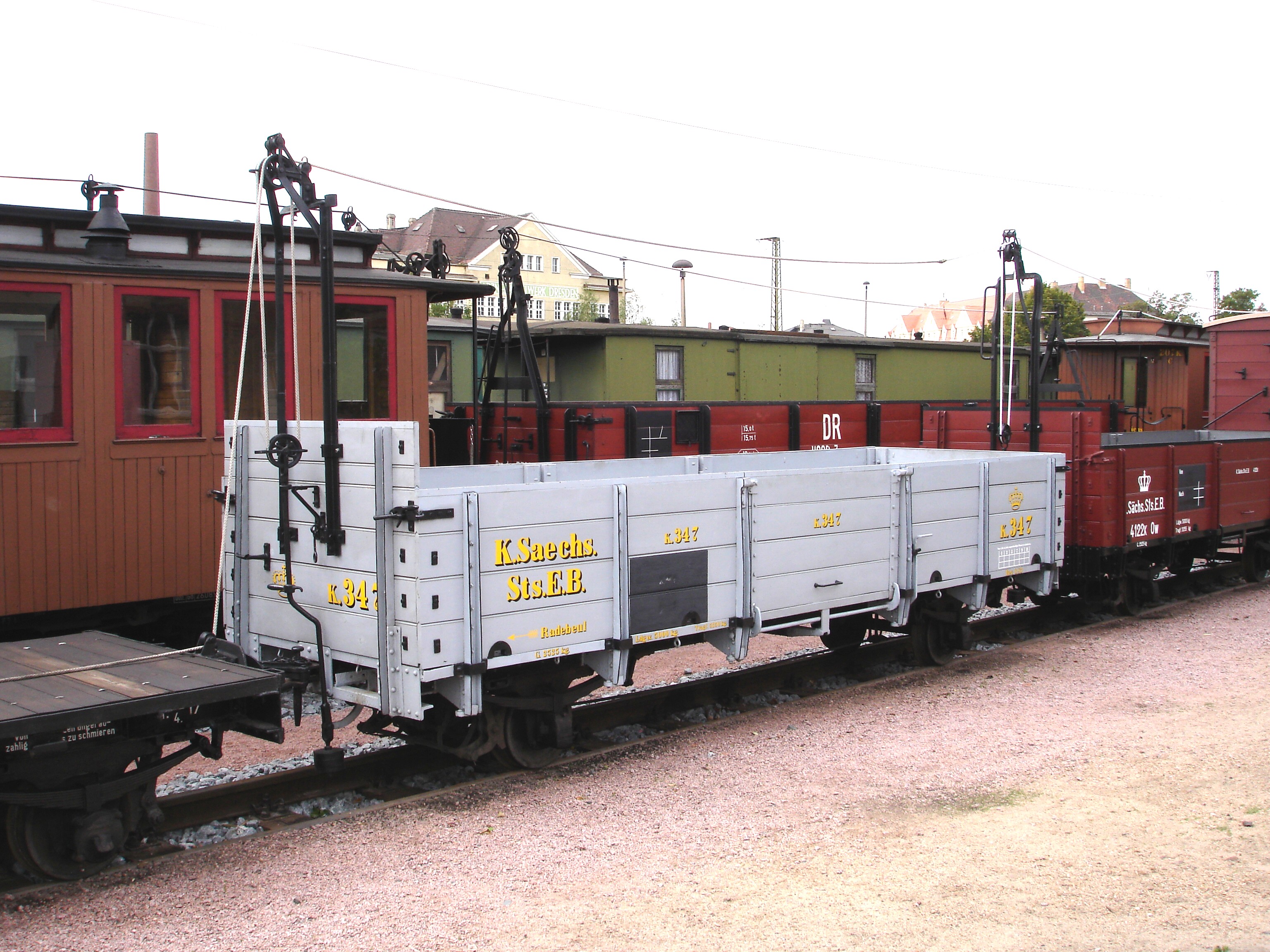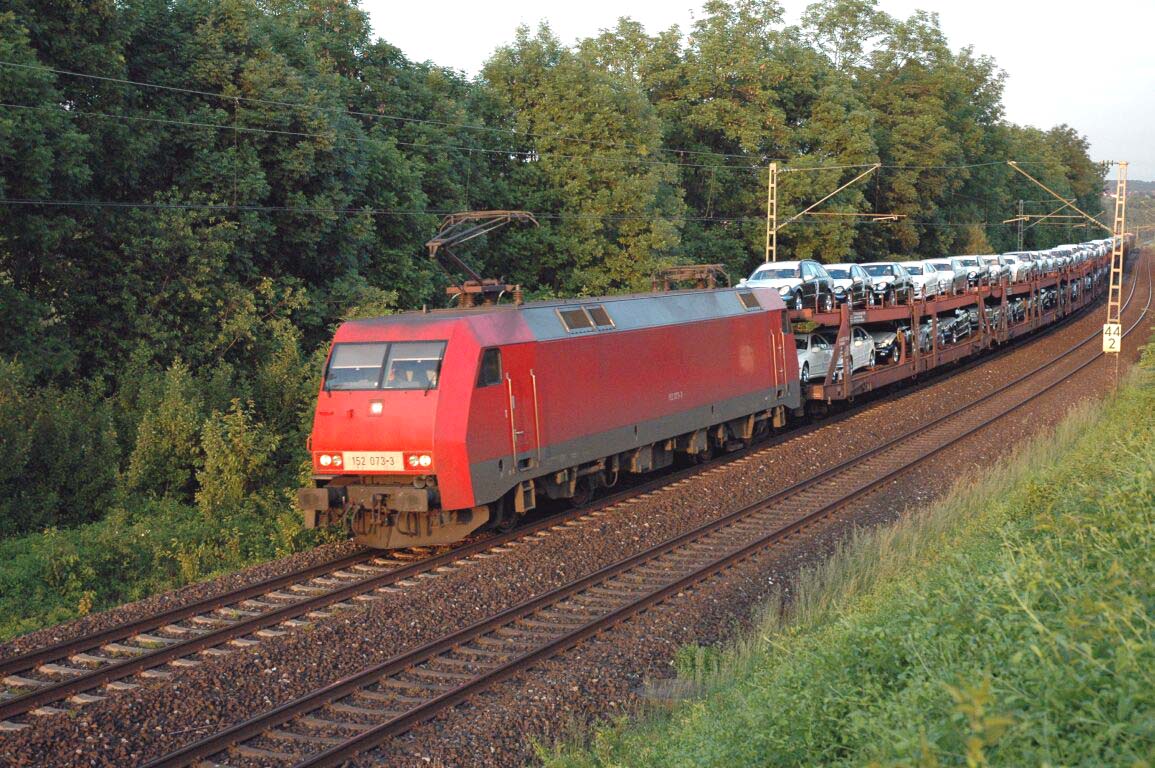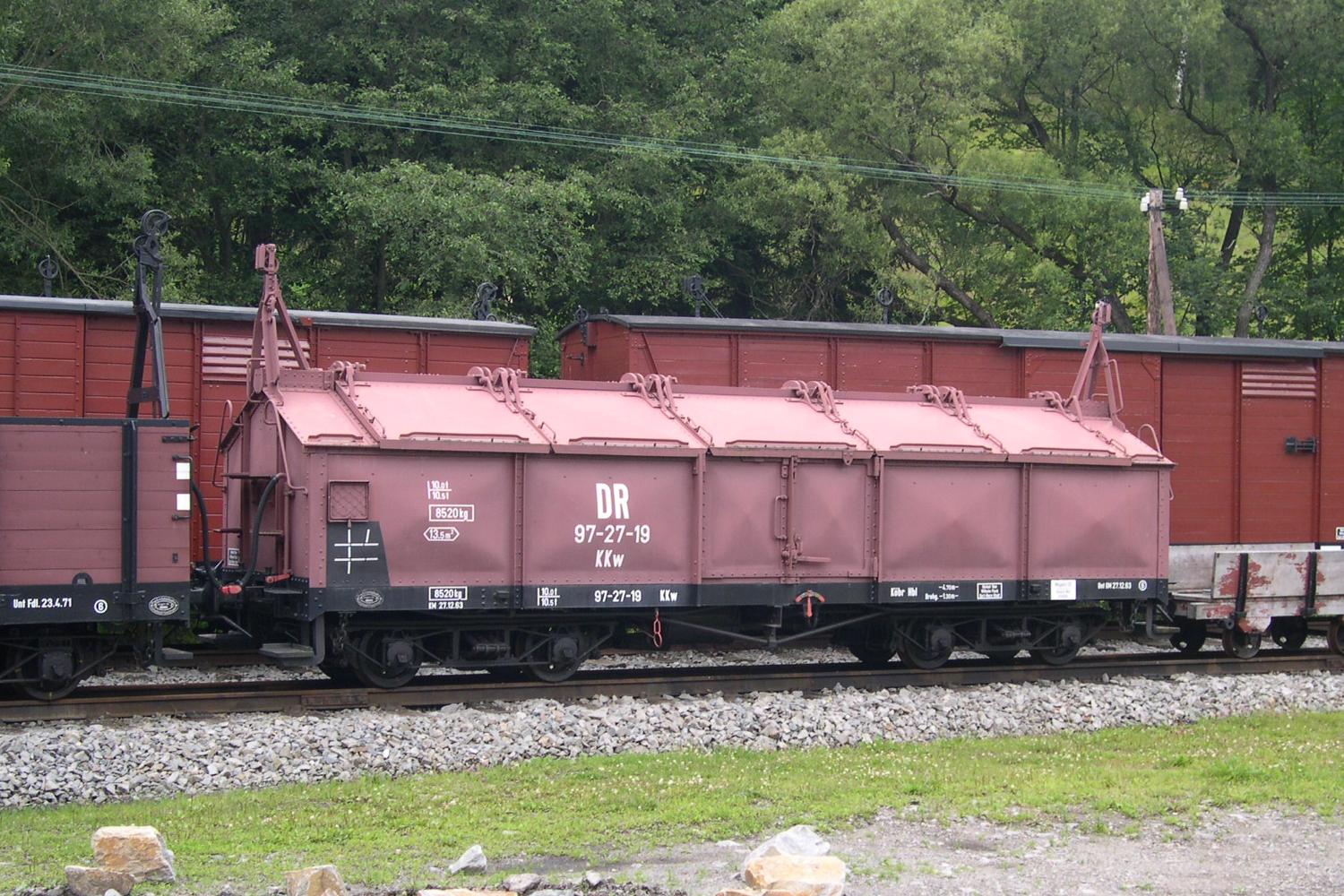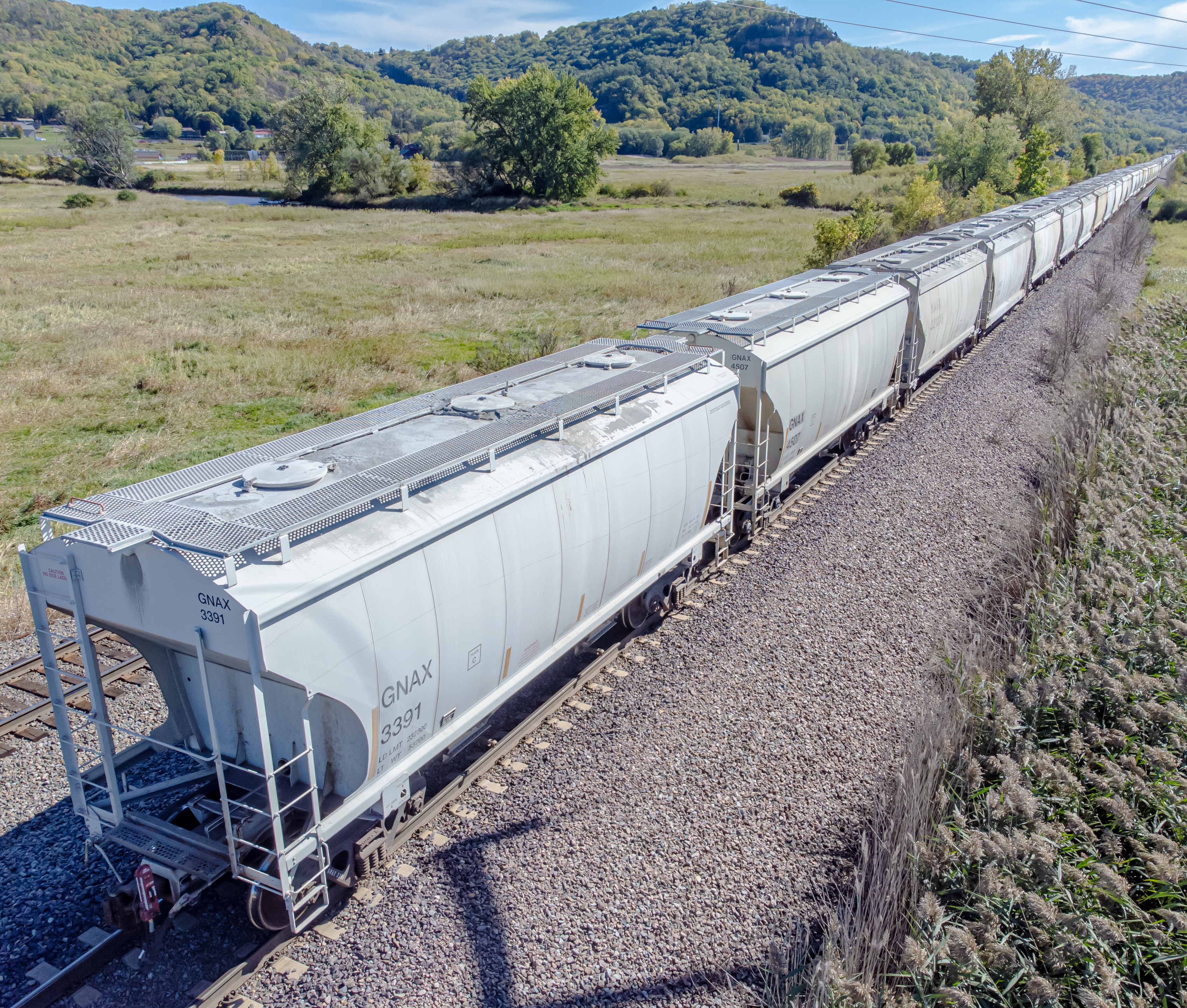|
Open Wagon
An open wagon (or truck in the UK) forms a large group of railway goods wagons designed primarily for the transportation of bulk goods that are not moisture-retentive and can usually be tipped, dumped or shovelled. The International Union of Railways (UIC) distinguishes between ordinary wagons (Class E/ UIC-type 5) and special wagons (F/6). Open wagons often form a significant part of a railway company's goods wagon fleet; for example, forming just under 40% of the Deutsche Bahn's total goods wagon stock in Germany. UIC standard goods wagons Since the 1960s, the majority of goods wagons procured by European railway administrations have been built to standards laid down by, or based on, those established by the UIC. In addition to open wagons the table also shows wagons with opening roofs (Class T), whose design is based on open wagons. File:El-Wagen-UIC-Bauart1-Zittau.jpg, Twin-axled UIC Type 1 open wagon, used as an ash wagon, on a transporter wagon in Zittau File:Es ... [...More Info...] [...Related Items...] OR: [Wikipedia] [Google] [Baidu] |
Coal
Coal is a combustible black or brownish-black sedimentary rock, formed as rock strata called coal seams. Coal is mostly carbon with variable amounts of other Chemical element, elements, chiefly hydrogen, sulfur, oxygen, and nitrogen. Coal is a type of fossil fuel, formed when dead plant matter decays into peat which is converted into coal by the heat and pressure of deep burial over millions of years. Vast deposits of coal originate in former wetlands called coal forests that covered much of the Earth's tropical land areas during the late Carboniferous (Pennsylvanian (geology), Pennsylvanian) and Permian times. Coal is used primarily as a fuel. While coal has been known and used for thousands of years, its usage was limited until the Industrial Revolution. With the invention of the steam engine, coal consumption increased. In 2020, coal supplied about a quarter of the world's primary energy and over a third of its Electricity generation, electricity. Some iron and steel-maki ... [...More Info...] [...Related Items...] OR: [Wikipedia] [Google] [Baidu] |
Funnel
A funnel is a tube or pipe that is wide at the top and narrow at the bottom, used for guiding liquid or powder into a small opening. Funnels are usually made of stainless steel, aluminium, glass, or plastic. The material used in its construction should be sturdy enough to withstand the weight of the substance being transferred, and it should not react with the substance. For this reason, stainless steel or glass are useful in transferring diesel fuel, while plastic funnels are useful in the kitchen. Sometimes disposable paper funnels are used in cases where it would be difficult to adequately clean the funnel afterwards (for example, in adding motor oil into a car). Dropper funnels, also called dropping funnels or tap funnels, have a Tap (valve), tap to allow the controlled release of a liquid. A flat funnel, made of polypropylene, utilises living hinges and flexible walls to fold flat. The term "funnel" may refer to the Chimney (locomotive), chimney or smokestack on a steam lo ... [...More Info...] [...Related Items...] OR: [Wikipedia] [Google] [Baidu] |
ITL Eisenbahngesellschaft
ITL can refer to: * International Territorial Level, geographic classification in the United Kingdom. * Imaging Technology Laboratory, part of the University of Arizona's Steward Observatory * '' In the Labyrinth'', a role-playing system built on The Fantasy Trip * Inferential theory of learning * Information Technology Limited, a British computer company of the 1980s (formerly CTL) * Information Technology Laboratory, a NIST laboratory since 2010 * Institute of Technology Law, National Chiao Tung University a law school in Taiwan * Interval Temporal Logic, a temporal logic * Islamic Tools and Libraries, a subproject of Arabeyes software which provides Hijri dates, Muslim prayer times and Qibla * Italian lira The lira ( , ; : lire, , ) was the currency of Italy between 1861 and 2002. It was introduced by the Kingdom of Italy (Napoleonic), Napoleonic Kingdom of Italy in 1807 at par with the French franc, and was subsequently adopted by the different s ..., the former currenc ... [...More Info...] [...Related Items...] OR: [Wikipedia] [Google] [Baidu] |
Maintenance Of Way
Maintenance of way (commonly abbreviated to MOW, also known as "Permanent Way Maintenance" or "PWM" in Britain) refers to the maintenance, construction, and improvement of rail infrastructure, including tracks, ballast, grade, and lineside infrastructure such as signals and signs. Track Railroad tracks consist of multiple key components: a track bed, and ballast forming the foundation of the tracks. Then the tracks themselves are place on the ballast, the tracks consist of a railroad tie, fasteners to secure the rails to the ties, such as spikes or clips, rails, which are assembled on a bed of ballast, which is in turn on a track bed that supports it all. Ballast is a material used to support the ties and rails, and keep them in place. It is also a key part of drainage along railway lines to ensure the integrity of the tracks during rain and other wet weather. Ballast is often a crushed stone. Stones need to be irregularly shaped, in order to increase friction that holds th ... [...More Info...] [...Related Items...] OR: [Wikipedia] [Google] [Baidu] |
Departmental Wagons
Departmental vehicles, also called departmental wagons or engineering vehicles, are special railway vehicles used to support the engineering functions of the railway.Ellis, Iain (2006). ''Ellis' British Railway Engineering Encyclopaedia''. Lulu, p. 93. . Thus, they serve the internal purposes of the railway company and are not used for general passenger or goods traffic. They are typically used to maintain railway facilities, not least the overhead catenary. Typical departmental vehicles include: *Drum carriers *Engineering vehicles * Gravity wagon, Hopper wagons *Mess coaches *Open wagon, Opens *Side rail loaders *Tool vans Railway vehicles Railway departmental vehicles are hauled by departmental locomotives. They are usually railway wagons used for the transport of works material for the maintenance of railway facilities or wagons used for other internal purposes that have been converted or specially built. They usually travel in special work trains, frequently at low speeds. O ... [...More Info...] [...Related Items...] OR: [Wikipedia] [Google] [Baidu] |
Conveyor Belts
A conveyor belt is the carrying medium of a belt conveyor system (often shortened to a belt conveyor). A belt conveyor system consists of two or more pulleys (sometimes referred to as drums), with a closed loop of carrying medium—the conveyor belt—that rotates about them. One or both of the pulleys are powered, moving the belt and the material on the belt forward. The powered pulley is called the drive pulley, while the unpowered pulley is called the idler pulley. There are two main industrial classes of belt conveyors; Those in general material handling such as those moving boxes along inside a factory and bulk material handling such as those used to transport large volumes of resources and agricultural materials, such as grain, salt, coal, ore, sand, overburden and more. Overview Conveyors are durable and reliable components used in automated distribution and warehousing, as well as manufacturing and production facilities. In combination with computer-controlled pallet ha ... [...More Info...] [...Related Items...] OR: [Wikipedia] [Google] [Baidu] |
Unit Train
A unit train, also called a block train or a trainload service, is a train in which all cars (wagons) carry the same commodity and are shipped from the same origin to the same destination, without being split up or stored en route. They are distinct from wagonload trains, composed of differing numbers of cars for various customers. Unit trains enable railways to compete more effectively with road and internal waterway transport systems. Time and money are saved by avoiding the complexities and delays that would otherwise involve assembling and disassembling trains at rail yards near the origin and destination. Unit trains are particularly efficient and economical for high-volume commodities. Since they often carry only one commodity, cars are of all the same type; often identical. Some commodities (e.g., coal) can be loaded at the origin while the train moves slowly on a loop track. The procedure is reversed at the receiving end, and because there generally is not any commodity ... [...More Info...] [...Related Items...] OR: [Wikipedia] [Google] [Baidu] |
Wagon With Opening Roof
The wagon with opening roof is a type of railway goods wagon that is, nowadays, defined and standardised by the International Union of Railways (UIC) as Class "T". They are a large category of rail vehicle, predominantly used for the transport of hygroscopic bulk commodities such as cement, plaster, lime (material), lime, potash and grain. To date, there are four different types of wagon with an opening roof (by way of example, the years refer to when they entered service with the German carrier, Deutsche Bundesbahn, DB): * The lidded wagon with several "roof" hatches or lids that can be opened upwards is the oldest type and is rarely seen today. Its disadvantage was that the bars to which the lids were attached meant they could only be opened individually. * In 1951 the sliding-roof wagon was built, whereby half the loading area could be opened up and loaded from above without obstruction at one time. This was achieved by sliding one half of the two-part roof over the other. * In 1 ... [...More Info...] [...Related Items...] OR: [Wikipedia] [Google] [Baidu] |
Hopper Car
A hopper car () or hopper wagon () is a type of railroad freight car that has opening doors or gates on the underside or on the sides to discharge its cargo. They are used to transport loose solid bulk commodities such as coal, ore, grain, and track ballast. Plastic pellets and some finely ground material, similar to flour, are transported in hopper cars that have pneumatic unloading. The bottom gates on the pneumatic hoppers connect to a hose attached to industrial facilities' storage tanks. Air is injected to fluidize the railcar contents for unloading. The hopper car was developed in parallel with the development of automated handling of such commodities, including automated loading and unloading facilities. Hopper cars are distinguished from gondola cars, which do not have opening doors on their underside or sides. Gondola cars are simpler and more compact because sloping ends are not required, but a rotary car dumper is required to unload them. Some "dual-purpose" ... [...More Info...] [...Related Items...] OR: [Wikipedia] [Google] [Baidu] |
Gravity
In physics, gravity (), also known as gravitation or a gravitational interaction, is a fundamental interaction, a mutual attraction between all massive particles. On Earth, gravity takes a slightly different meaning: the observed force between objects and the Earth. This force is dominated by the combined gravitational interactions of particles but also includes effect of the Earth's rotation. Gravity gives weight to physical objects and is essential to understanding the mechanisms responsible for surface water waves and lunar tides. Gravity also has many important biological functions, helping to guide the growth of plants through the process of gravitropism and influencing the circulation of fluids in multicellular organisms. The gravitational attraction between primordial hydrogen and clumps of dark matter in the early universe caused the hydrogen gas to coalesce, eventually condensing and fusing to form stars. At larger scales this results in galaxies and clust ... [...More Info...] [...Related Items...] OR: [Wikipedia] [Google] [Baidu] |
Paper
Paper is a thin sheet material produced by mechanically or chemically processing cellulose fibres derived from wood, Textile, rags, poaceae, grasses, Feces#Other uses, herbivore dung, or other vegetable sources in water. Once the water is drained through a fine mesh leaving the fibre evenly distributed on the surface, it can be pressed and dried. The papermaking process developed in east Asia, probably China, at least as early as 105 Common Era, CE, by the Han Dynasty, Han court eunuch Cai Lun, although the earliest archaeological fragments of paper derive from the 2nd century BCE in China. Although paper was originally made in single sheets by hand, today it is mass-produced on large machines—some making reels 10 metres wide, running at 2,000 metres per minute and up to 600,000 tonnes a year. It is a versatile material with many uses, including printing, painting, graphics, signage, design, packaging, decorating, writing, and Housekeeping, cleaning. It may also be used a ... [...More Info...] [...Related Items...] OR: [Wikipedia] [Google] [Baidu] |







